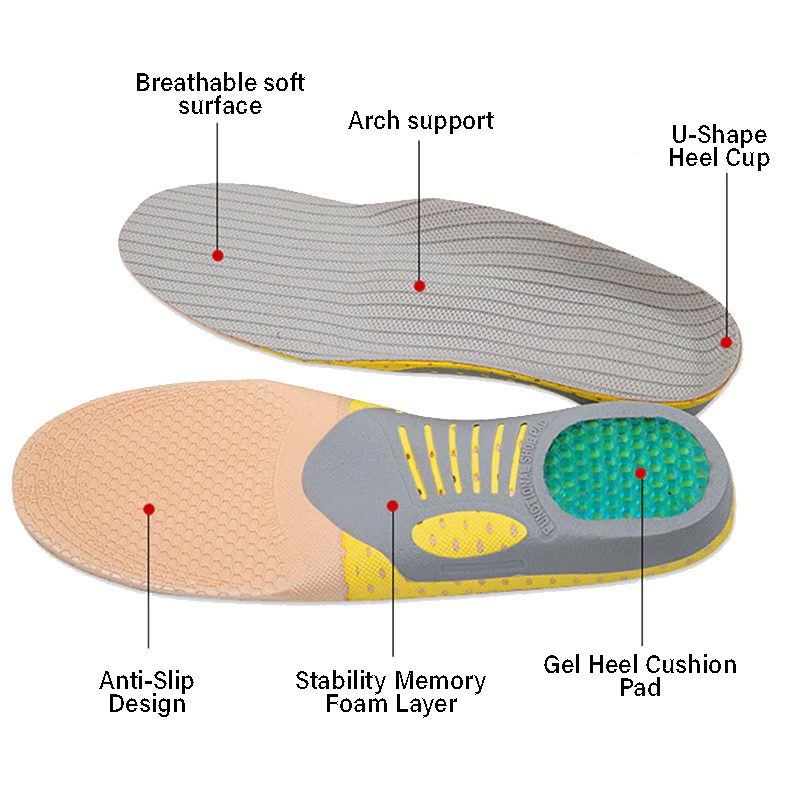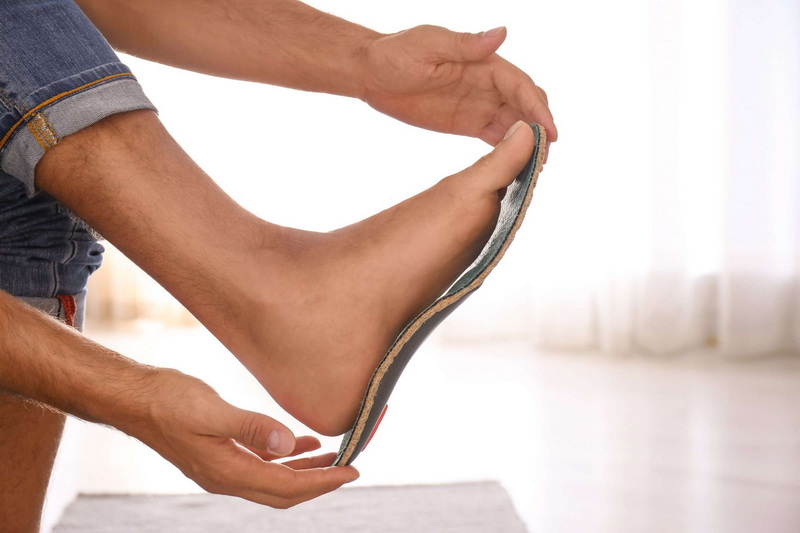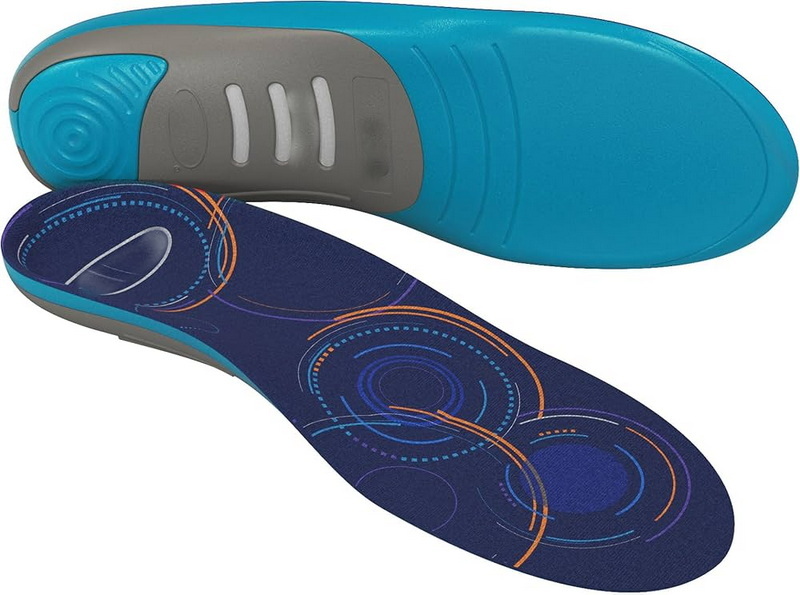Views: 222 Author: Edvo Publish Time: 2025-10-24 Origin: Site











Content Menu
● What Are Memory Foam Insoles?
● Why Memory Foam Insoles Are Perfect for Air Travel
● Understanding 2025 Airport Security Updates
● Memory Foam vs. Gel Insoles for Travel
● Practical Travel Tips for Using Memory Foam Insoles
● How Memory Foam Technology Works
● In-Flight Advantages of Memory Foam Insoles
● Choosing the Right Memory Foam Insoles for Travel
● Medical and Health Considerations
● Eco-Friendly and Sustainable Design Options
● Airline Staff and Traveler Testimonials
● FAQs
>> 1. Can I wear memory foam insoles through airport security?
>> 2. Are memory foam insoles safe for long flights?
>> 3. Can I pack extra insoles in my carry-on?
>> 4. Are memory foam insoles considered medical items?
>> 5. What's the best way to maintain memory foam insoles for frequent travel?
Air travel today involves more than just reaching your destination—it's about maintaining comfort and well-being throughout the journey. Memory foam insoles have become an essential item for frequent travelers, providing both support and relief during long hours spent navigating airport terminals and sitting on planes. But a common question arises among travelers: are memory foam insoles allowed on planes? The answer is absolutely yes. They are fully approved for air travel under 2025 transportation and security standards and are even recommended for frequent fliers who value comfort.
This comprehensive article explores current travel regulations, the science of memory foam technology, benefits of flying with insoles, and practical tips to help you make the most of this travel accessory.

Memory foam insoles are crafted from viscoelastic polyurethane, a type of material that responds to heat and pressure by molding to the contours of your feet. This adaptability ensures personalized support, cushioning impact with every step. Originally used in NASA's space programs, memory foam technology has evolved to enhance modern footwear, delivering optimal pressure distribution and fatigue reduction.
Advanced memory foam insoles can include several features such as cooling perforations, antimicrobial layers, and ergonomic arch profiles. These attributes make them an excellent choice for travelers seeking consistent foot relief during long walks within airports or extended flight durations. The soft yet stable texture of memory foam absorbs shock and reduces strain, protecting your feet from the fatigue often caused by narrow airplane aisles and long queues.
Long flights and extended boarding lines can take a toll on your feet. Memory foam insoles help reduce swelling, improve posture, and maintain circulation. Their moisture-regulating properties also minimize discomfort caused by cabin air pressure and temperature changes. Unlike traditional flat insoles, memory foam varieties adjust as your feet expand during altitude changes, maintaining support throughout your flight.
They additionally contribute to long-term posture benefits. With better arch alignment and uniform weight distribution, passengers who regularly use memory foam insoles often experience fewer back and joint aches after landing. For aircrews and frequent travelers who spend long hours standing or walking, the difference is remarkable.
Yes. Memory foam insoles are completely allowed on all commercial flights. They do not contain restricted components or materials under TSA or international aviation safety regulations. Unlike gel-based insoles, which may sometimes fall under liquid restrictions if excessively filled, memory foam insoles are classified as solid and harmless. Travelers can wear them through airport scanners or pack extra pairs in either their carry-on or checked luggage.
In 2025, TSA's procedural changes have made airport security smoother than ever. With enhanced scanning systems, passengers no longer need to remove shoes at security checkpoints unless specially instructed. This includes footwear with integrated or removable memory foam inserts. These insoles are generally invisible to scanners and pose no interference to modern X-ray or millimeter-wave screening equipment.
The TSA's latest updates focus on maximizing convenience for passengers while maintaining strict safety standards. Thanks to advanced computed tomography (CT) scans and smart scanning tunnels, most travelers can now pass security without removing items like laptops, liquids, or footwear. This innovation means that even orthopedic footwear and memory foam insoles no longer trigger manual checks.
It's important to note that while TSA allows such items, airport officers retain discretionary authority to request shoe removal if irregularities appear in scans. However, this is extremely rare for non-metallic, non-liquid insoles. For passengers traveling with medical-grade orthotic inserts, providing a doctor's note or keeping them installed in shoes helps streamline additional screenings if needed.
Outside the U.S., most aviation authorities—including in the EU, UK, China, and Australia—follow similar screening policies regarding non-liquid footwear inserts. Travelers should still remain aware of regional regulations, but in virtually all countries, solid foam insoles are permitted onboard.
While both memory foam and gel insoles improve comfort, they differ in structure and regulation. Gel-filled varieties contain semi-liquid or jelly-like substances for shock absorption. Because of this, large amounts of gel can occasionally attract scrutiny at airport checkpoints due to liquid restrictions. Memory foam, by contrast, is fully solid, making it simpler to pass through security.
From a travel perspective, memory foam is also lighter and maintains its resilience in varying cabin temperatures. Gel insoles, though highly cushioned, can harden in cold conditions or shift inside shoes, whereas foam models retain their consistency. These functional and regulatory advantages make memory foam a superior option for frequent flyers.

1. Wear Them During Check-in: Keeping memory foam insoles in your shoes ensures comfort while standing for long periods in lines or walking across large terminals.
2. No Removal at Security: Under updated TSA procedures, you can keep your shoes and insoles on during scans. Follow officer instructions only if exceptions occur.
3. Keep a Spare Pair: Foam insoles are lightweight and compact, so carrying extras in your hand luggage is easy if you plan multi-day trips.
4. Air Out Between Flights: Memory foam materials retain shape and absorb moisture. Allow them to rest overnight to maintain freshness.
5. Ideal for Long Flights: Wearing memory foam insoles helps reduce foot swelling and cramps during extended sitting periods.
6. Suit All Footwear Types: Whether wearing sneakers, casual loafers, or slip-ons, memory foam provides consistent orthotic support throughout the journey.
Memory foam is temperature-sensitive and responsive to weight. When pressure is applied, the foam cells compress slowly, forming a contour that matches the unique shape of your foot. Once pressure is released, the foam returns to its original shape, granting its reputation as “memory” material.
The science lies in its viscoelastic properties, combining the characteristics of liquid and solid materials. This means memory foam distributes pressure evenly across the foot's surface, reducing stress on specific points like the heel or arch. For air travelers, this equals reduced fatigue and improved posture even after long hours of inactivity on the plane.
Modern versions of memory foam insoles often integrate breathable layers, activated carbon filters for odor control, and antibacterial coatings. Together, these innovations ensure that your feet stay comfortable and hygienic throughout the journey.
Wearing memory foam insoles during flights offers several physical and psychological benefits. Passengers frequently report lower instances of swelling and ankle discomfort due to improved circulation. During extended travel, reduced pressure on the soles also alleviates numbness and stiffness. In business or economy class alike, these insoles transform the limited space into a more restful experience.
Frequent travelers also find memory foam insoles beneficial for reducing post-flight fatigue. By maintaining consistent support during sitting or walking transitions, they lower the risk of developing aches in the knees, hips, and lower back. Additionally, since cabin air is often dry, the breathable layers within quality memory foam models aid in moisture management—a small yet significant detail during long-haul journeys.
When selecting memory foam insoles for flying:
- Thickness: Aim for medium-density foam around 5–8 mm, balancing softness and stability.
- Ventilation: Choose perforated models or “air-cooled” versions with airflow channels for long hours of wear.
- Arch Support: Pick insoles designed for your foot type—neutral, high, or low arch.
- Durability: High-quality memory foams retain shape longer, preventing flattening after repeated compression.
- Removability: Opt for removable insoles, which make cleaning and air drying easy between uses.
These small considerations ensure that your investment enhances both your footwear's lifespan and the comfort level throughout your travel schedule.
For passengers with foot-related medical conditions such as plantar fasciitis, bunions, or flat arches, memory foam insoles can be a lifesaver. They evenly distribute body weight, reducing pressure on sensitive areas. Airlines and transport regulators recognize orthotic and medical insoles as personal health devices, meaning they are explicitly approved in all flight classes.
People experiencing circulatory issues can also benefit. Proper cushioning helps stimulate minor muscle movement, improving blood flow during long-duration sitting. For maximum comfort, it is recommended to combine memory foam insoles with compression socks during multi-hour flights.
In recent years, many manufacturers have introduced eco-conscious memory foam insoles made from plant-based polyols and recycled materials. This innovation addresses environmental concerns while maintaining the same elasticity and responsiveness. Some models use biodegradable top covers or washable fabric coatings, aligning comfort with sustainability goals.
Travelers who prioritize green products should look for insoles labeled as recyclable or low-VOC certified. These options ensure minimal environmental impact while providing long-lasting support for countless future trips.
Flight attendants and pilots who stand for extended periods report exceptional relief when switching to memory foam insoles. The consistent pressure absorption not only removes fatigue but also encourages proper spinal alignment. Frequent flyers similarly share that switching to memory foam results in fewer aches and greater energy upon landing.
Many airport workers have called memory foam footwear inserts their “hidden travel hack” for surviving multi-shift days in large terminals. As personal comfort becomes an integral part of travel efficiency, insoles are quickly becoming a staple accessory for both staff and passengers.
Yes, memory foam insoles are indeed allowed on planes and are encouraged for any traveler seeking elevated comfort and better health during flights. 2025's updated TSA and international security regulations ensure that passengers can wear them without removal at most checkpoints. Combining ergonomic design, adaptability, and regulatory compliance, memory foam insoles enhance every phase of your journey—from check-in to landing.
So, before your next flight, consider upgrading your footwear setup. The lightweight luxury of memory foam can make even the longest flights feel smoother and far healthier.

Yes, you can pass through airport security wearing them. TSA-approved body and shoe scanners detect them easily without the need for removal.
Absolutely. They're designed to provide consistent pressure relief, making them especially useful for long-haul trips where feet often swell.
Yes. It's recommended for travelers who plan to change shoes or refresh their comfort during layovers.
They can be categorized as comfort or medical support items, especially if recommended by healthcare providers.
Air them out after flights, wipe surfaces with a damp cloth, and store them flat to retain shape and hygiene for your next journey.